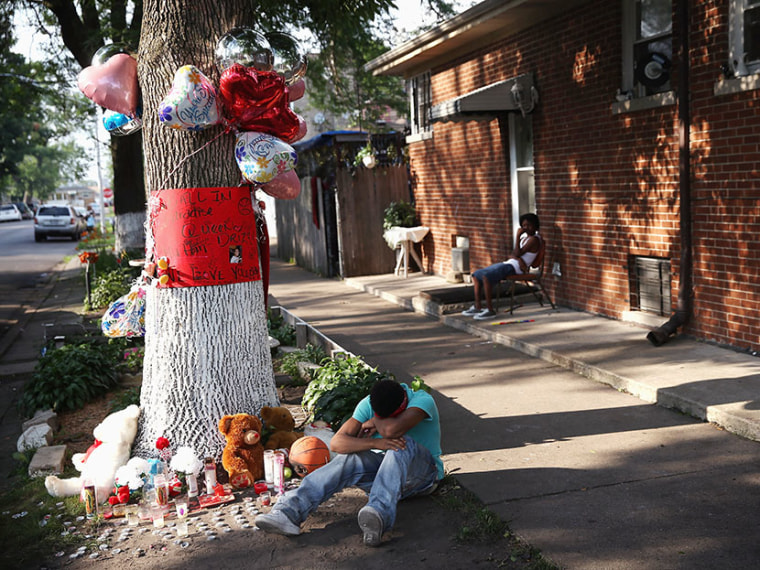While Chicago Police Superintendent Garry McCarthy and city officials have claimed recent victories in the city’s fight against gun violence, with double-digit declines in shootings and killings from last year, a bloody Fourth of July weekend has proven just how stubborn and how demoralizing gun violence can be.
At least 60 people were shot and 12 others were killed during the holiday weekend. Of the 16 murders that occurred last week, 11 happened between Wednesday and Sunday.
“While to date we've had significantly fewer shootings and significantly fewer murders this year, there's more work to be done and we won't rest until everyone in Chicago enjoys the same sense of safety,” McCarthy said in a statement on Monday.
According to police, murders are down 28% from 276 a year ago at this time to 200 as of Monday afternoon. Shootings are down 24%, from 1,1193 to 909.
But for some who live and work in the communities most affected by gun violence, those numbers haven’t meant a greater sense of safety or security.
On Saturday evening, Tory Hunter, a community activist and freelance writer, was in the Lawndale neighborhood interviewing a resident about gun violence when gunfire rang out.
“I literally [had just] said, can you tell me the difference between a gunshot and a firecracker,” Hunter told msnbc on Monday. “Then it was like a movie. He said, 'like that,' and all I heard was boom-boom-boom.”
Hunter said the man pushed her to the ground. The next thing Hunter recalled was chaos up the block. When the smoke cleared eight people were shot, one fatally. The injured included a 72-year-old woman shot in the ankle, according to NBC Chicago. The police said two gunmen opened fire on a group of people in the 2800 block of West Flournoy Street.
“I’m 51 years old and shouldn’t have to be dodging bullets,” Hunter said.
It was the second time in less than a week that Hunter’s family had been caught up in a shooting. On the Fourth of July a young man was shot at a car wash about a block away from Saturday’s shooting. Hunter’s husband worked at the car wash and was talking to the young man, identified in reports only as a 22-year-old man, moments before he was gunned down.
“The bottom line is we’re in trouble,” said Hunter, whose husband quit his job at the car wash Monday morning. “There’s a lot of hopelessness and I don’t know that we have faith, if we have hope in anything or any person because the ones that should be leading are fighting against one another,” she said, referring to the disproportionate number of young black men who tend to be victims and perpetrators of violent crimes in Chicago.
After a number of high-profile shootings earlier in the year, including the killing of Hadiyah Pendleton, a 15-year-old majorette who was killed just a week after she performed at President Obama’s inauguration, Mayor Rahm Emanuel and Superintendent McCarthy announced a new policing strategy to address gun violence in the city. The strategy included flooding high-crime zones with more officers. Emanuel also urged lawmakers to stiffen penalties for those caught with illegal guns and called for frank conversations in some of the city’s most violent neighborhoods.
“I think the city is at an inflection and reflection point,” Emanuel said during a press conference in early February, saying that loop holes in gun laws and a culture of diminished self-worth and diminished value of young people contribute to the city’s rampant gun violence.
In the following months there were still a number of high-profile killings, including the death of 6-month-old Jonylah Watkins, struck by five bullets while sitting in her family’s parked minivan. But the rate of violence seemed to be decreasing. Officials reported a 42% drop in homicides between January and the end of April.
“We’re going to have good days, we’re going to have bad days, but what’s the overall trend line?” McCarthy told NBC Chicago in May. “In the first four months of this year, we’re in a position that we haven’t been in since the mid-Sixties, as far as the murder rate goes.”
According to police spokesman Adam Collins, overall crime is down 14% from last year. Collins said that while there was a lot of bloodshed and violence over the holiday weekend, it was still less than what the city experienced over the same week last year.
Over the Fourth of July week last year there were 76 shootings compared to 65 this holiday week.
But the summer months in Chicago and many other urban cities tend to mark the high season for gun violence. Some city residents fear that the weekend’s bloodshed could be a precursor to a hot, bloody summer.
"If there is less gun violence, it still doesn’t feel that way. I think these things ebb and flow with the weather,” said Marvin Harris, a psychotherapist with the Children, Home and Aid Society who lives in the Englewood neighborhood. A 31-year-old Englewood man was among last week’s death toll, killed on Thursday night after two men opened fire on him as he stood on a front porch, according to reports.
“On some level we get these reports on television saying that crime has decreased,” Harris said. “But they’re going to present things a certain way. If we have 10 shootings or two shootings, it’s still too much.”
Superintendent McCarthy echoed Harris’s feeligns.
“No shooting or murder is acceptable,” he said, “and every day Chicago Police work to combat crime and violence in close partnership with the communities we serve… we all have a role to play in public safety.”
